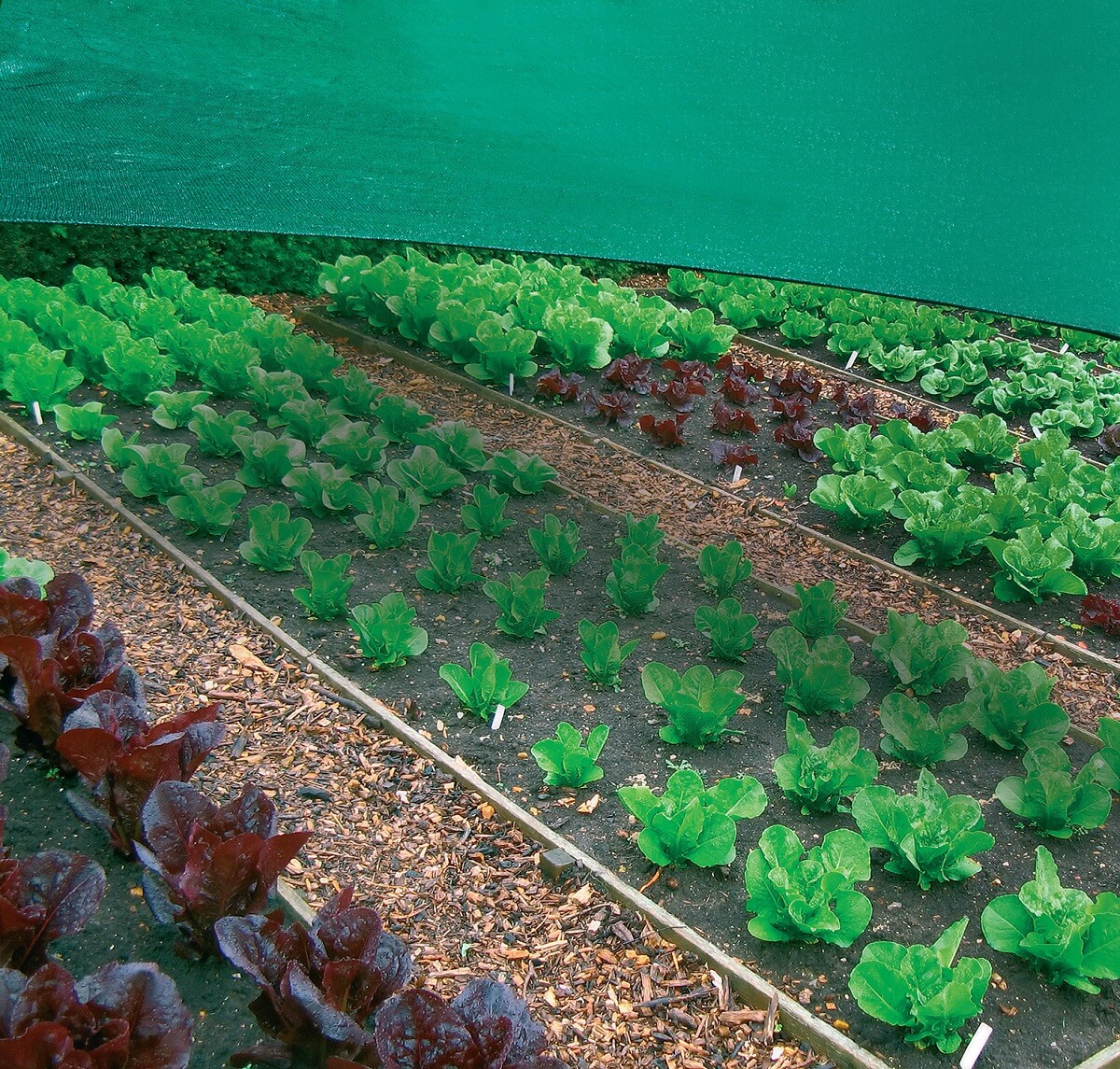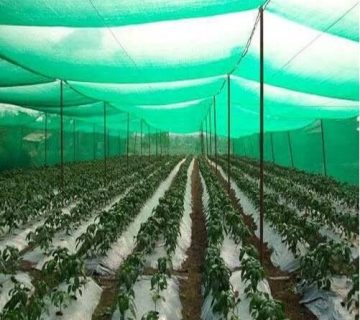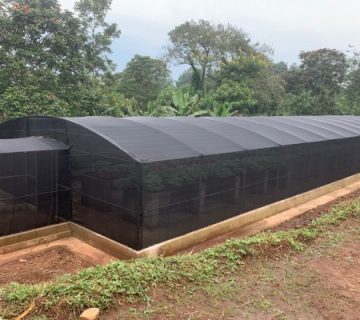Protect your plants from the extreme heat by using shade netting for vegetables and a lightweight knitted polyethylene cloth. Depending on the specific requirements of your plants, flowers, or crops, you can choose from shade cloth fabric densities ranging from 50% to 90%. The product is versatile, finding uses in greenhouses, hoop houses, and the outdoors. Fencing, windscreens, and privacy walls are some further applications. The shade cloth won’t dry out and get brittle and won’t rot or mildew, either. It provides better airflow, enhances light spread, and reduces heat buildup in greenhouses. Therefore, shade cloth can reduce energy expenses by decreasing the frequency of fans needed to operate during the warmer months. Shade net may be set up in minutes and taken down just as quickly when it’s not in use.
What type of shade should I use for shade netting for vegetables?
Depending on the type of harvest you’re working with, you should choose shade netting for vegetables. These sunshades not only block the sun’s rays but also provide a measure of privacy and act as a windbreak, making them ideal for use with cattle, pets, plants, and humans. Growers typically utilize densities between 50 and 60 percent, with higher concentrations of 70 to 80 percent employed in the south and for light-sensitive plants in the north.
To achieve the desired level of shading, many people choose to install higher-density shade on their roofs and lower-density shade on their walls. Gardeners of vegetables should consult the Agricultural Extension office of their local university to learn what density of shade cloth will work best for their region and chosen crops.
What is the shade percentage?
The amount of light blocked by the shade measures its density. To give you an idea, 80% of shadow blocks 80% of the sun’s rays. Regarding shade netting for vegetables, vegetables thrive in partial shade between 30 and 50 percent.
- 30-60%: This percentage is perfect for growing plants in greenhouses. It’s worth noting that shade cloth can also keep the birds away from fruit trees and vegetable gardens.
- 30 to 90% is usually used in greenhouses.
- 90 %: Good thought for a ground cover to prevent weeds.
Using shade cloth in the garden can help save money on water and electricity over the summer months.
Benefits of shade netting for vegetables
Here are some of the main and most important benefits of shade netting for vegetables.
Blocking out the sun
Using shade fabric, plants can be kept cool and protected from the sun’s rays. It accomplishes this by reflecting sunlight but blocking it from reaching the plants directly. It’s a simple method for keeping your veggies cool.
Prevents the rain from damaging vegetables
The shade cloth keeps the rain from harming the vegetable garden and the overflow from washing it away. It also helps prevent soil erosion by keeping water in the ground for longer.
Blocking the wind
Vegetables and other plants in the garden can be protected from wind damage by using shade cloth. Because of this, the weather gets warmer, and the harvest increases.
Keep birds and other pests away from plants
When used properly, shade cloth may keep unwanted visitors like birds and pests out of your garden. The shade cloth will prevent birds and other pests from destroying your garden work.
Safeguards against really extreme temperatures
Vegetable gardens covered with shade fabric may survive even the coldest winters. In the event of a rapid drop in temperature, for instance, while you are tending your vegetable garden, shade cloth might be used to prevent frostbite.
Preserve soil moisture
Shade cloth is a low-upkeep lawn fabric that helps plant roots retain moisture while blocking the airflow of leaves and pollen, reducing the frequency you need to hoe the lawn. It’s useful for keeping the garden soil moist.
A brief installation guide to shade netting for vegetables
Collecting and organizing materials
- Shade cloth, iron wire, and crutches are the three items that must be assembled beforehand.
- Shade cloth should be made from durable fabric.
- Verify that the fabric is 100% polyester or a polyester/cotton combination. Wire made of flexible iron can fasten shade fabric to the grid.
- The next step is adding wood, bamboo, or metal support to the structure.
Gather the necessary tools
To properly install the shade cloth over your vegetable garden, you will need the following materials:
- The device measures the distance from the ground to the shade fabric, allowing precise adjustments.
- Shade cloth and iron wire-cutting shears.
- Matches for finishing off the shade cloth templates.
- A collapsible ladder to help you get to those hard-to-reach places.
- Use proper safety gear, so no one is hurt while placing the shade cloth.
- Making shade cloth for the garden can begin once you have gathered the necessary supplies.
Specify the dimensions of the shade cloth
Be sure you use the right measurements to cut the shade cloth to the right dimensions. Aside from making it seem bad and hindering your flexibility, the wrong size might cause several other problems.
To get an accurate reading, you must:
- Measure the area that has to be covered with the shade cloth.
- It’s time to get out the scissors and shade cloth!
- You may fix the scissors cut with a match.
Installing the shade cloth
a. Organize the crutches where they belong.
b. You can use the shade cloth to cover the crutches.
c. Use the iron wire to bind it.




No comment